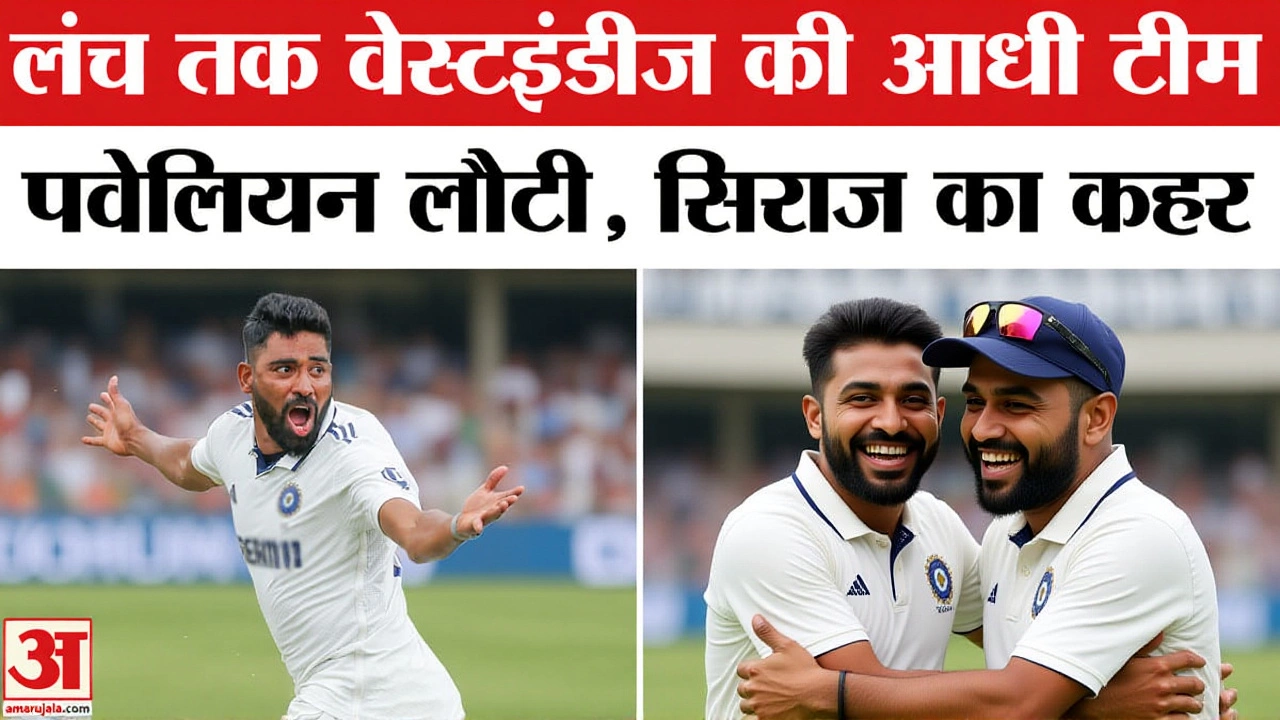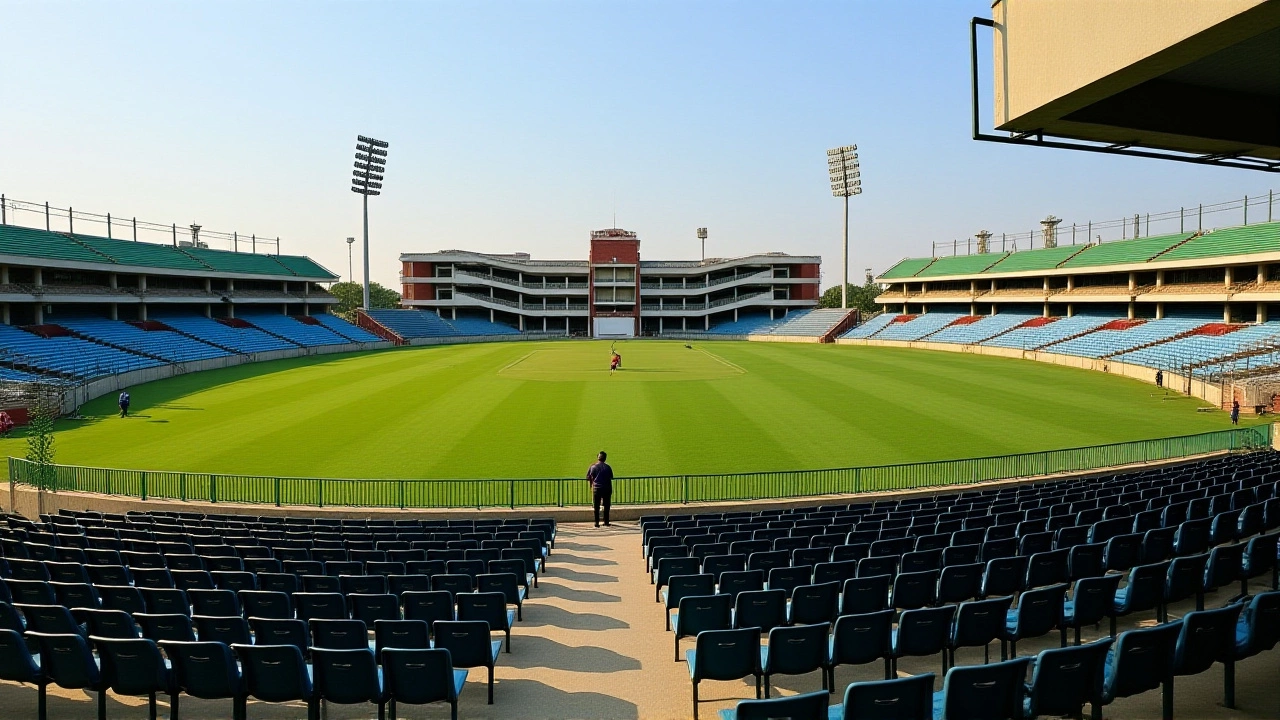India finally broke their Kotla curse, defeating West Indies by five wickets on November 9, 2011, to claim their first Test victory at Feroz Shah Kotla in seven attempts. Captain Mahendra Singh Dhoni, India's skipper steered his team home with an unbeaten 18, while VVS Laxman's 58 not out sealed the win as India chased down 276 runs with more than four sessions to spare. But the crowd of over 10,000 was left stunned when Sachin Tendulkar, batting at number four, fell for 76—just short of his 100th international century—off a deceptive googly from Devendra Bishoo. This win wasn't just a series opener; it carried massive implications for the ICC Test rankings and unearthed two fascinating historical footnotes.
A Historic Victory After 24 Years
Turns out, this was India's first win against the West Indies at this Delhi ground since 1987. The significance hit hard when you realize they'd lost three and drawn three Tests here since then—a streak that began with a crushing defeat by the same opponents. That 1987 loss? It happened before Tendulkar even made his international debut, with Vivian Richards guiding the visitors to victory with a century chase. The parallels were uncanny: both matches featured West Indies chasing 276 at the same venue. Back in '87, Richards' 112 not out sealed it; here, Tendulkar almost reached his 100th hundred before the crowd's collective gasp echoed through the stands.
What made this chase special was how it unfolded. India's middle order delivered when it mattered most, with Tendulkar and Rahul Dravid—the two all-time leading run-scorers in Test history—batting together on home soil for the first time. The Kotla pitch, typically slow and unresponsive, played right into India's hands during the middle session when they scored 126 runs without losing a wicket. But West Indies' bowling discipline slipped just enough at the wrong moment. The final over was pure theater: Dhoni's single sealed the win as Laxman remained unconquered, ending the ground's 24-year wait for a victory against the Caribbean side.
Tendulkar's Near-Miss and Local Legacy
Here's the thing—Tendulkar's dismissal was more than just a statistical quirk. At 38 years old, he was chasing a milestone that had never been achieved in cricket history: 100 international centuries. The stadium held its breath when he reached 70, then 75... only for Bishoo's googly to sneak past his defenses. The timing stung: he'd been batting for 148 deliveries, and the century would've come on the same ground where he made his Test debut 22 years earlier. But wait—there's an ironic twist. Tendulkar actually wasn't in the 1987 squad. The selectors had considered him for that tour but decided 16-year-old Sachin was too young to face the fearsome West Indies pace attack. Jansatta reported that Raj Singh Dungarpur, then chief selector, had pushed for his inclusion but was overruled.
Another quiet tragedy unfolded in the team sheet. For the first time in 18 years since 1993, no Delhi-based player featured in India's playing XI. The absence felt personal for local fans who'd watched legends like Venkatesh Prasad and Anil Kumble represent their city. Oddly enough, this wasn't about talent—Delhi's cricket academies were producing stars—but about national selectors favoring players from other zones. The Kotla faithful watched as out-of-town batters like Laxman and Tendulkar delivered, while homegrown talent waited in the wings. This break in tradition highlighted how national team selection had shifted from regional loyalty to pure performance metrics.
Rankings at Stake and WI's Fading Glory
The stakes were huge beyond just series pride. This victory positioned India to potentially jump to second place in the International Cricket Council rankings if they swept the series 3-0 while South Africa lost to Australia. West Indies' captain Darren Sammy, leading the Caribbean side, knew the implications: his team was fighting to maintain relevance in Test cricket after decades of decline. The match exposed their vulnerability—disciplined in early sessions but unraveling under pressure, much like the team's global standing.
Comparing the 2011 side to their 1987 predecessors tells a story of cricket's shifting power dynamics. That dominant '87 West Indies team, featuring Richards and Malcolm Marshall, had crushed India by 212 runs at the same venue. Now, the Caribbean team was led by Sammy with a bowling attack lacking the fire of past eras. The 1987 match had seen 54,000 fans; now, 10,000 witnessed a different era. As one veteran journalist noted, "TheWI of 1987 could've chased 400 here. This lot struggles at 276." The contrast was stark—and a little sad for old-school fans.

What Comes Next for Both Teams
India's momentum carried them toward the next Test in Mumbai starting November 14, 2011, with the series finale in Kolkata from November 22. Tendulkar's century quest would continue, but the spotlight had shifted: could they make it 2-0 and put serious pressure on South Africa for that second ranking spot? Meanwhile, West Indies faced a must-win scenario to avoid a series whitewash that would further damage their Test standing.
Longer-term, this match signaled a transition. The absence of Delhi players hinted at BCCI's growing centralization of talent scouting. Board of Control for Cricket in India, headquartered in Mumbai, was increasingly prioritizing national performance over regional representation—a trend that would accelerate in coming years. For West Indies, it underscored their struggle to compete with full-time cricketing nations. The West Indies Cricket Board, based in Antigua, faced tough questions about their development pathways as the gap widened.
Frequently Asked Questions
Why was Tendulkar's 76 runs so significant?
Tendulkar's 76 runs came when he was just four runs short of his historic 100th international century. This near-miss at Feroz Shah Kotla was particularly poignant because he'd debuted at this same venue in 1989, and the century would have been his first at this ground since then. The 76 also made him the highest run-scorer in the match, highlighting his enduring class despite the milestone eluding him.
How did the 2011 Test result compare to the 1987 match?
In 1987, West Indies chased 276 to win at Feroz Shah Kotla, led by Vivian Richards' century. India's 2011 chase matched that exact score but with opposite results—India won this time. The 1987 victory was part of West Indies' dominant era, while India's 2011 win broke a 24-year drought at the venue and marked their first Kotla Test win since 1987. The 276-run chase ranked as the second-highest successful chase on Indian soil at the time.
Why were no Delhi players selected for the 2011 Test?
This marked the first time since 1993 that no Delhi-based cricketer featured in India's playing XI at Feroz Shah Kotla. Selection committee chairman Kiran More stated it reflected pure merit-based selection, with players from other zones outperforming Delhi talents in domestic circuits. The absence ended 18 years of local representation tradition, signaling BCCI's shift toward national performance over regional loyalty in team selection.
What were the ICC ranking implications of this win?
India's victory positioned them to potentially reach second place in the ICC Test rankings if they won the three-match series 3-0 while South Africa lost their two-Test series against Australia. The team entered the match ranked third, with South Africa at number one and England second. This win narrowed the gap to 12 ranking points behind England, making the series outcome critical for global standings.
